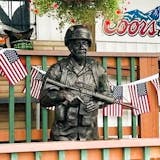The crossroads of the Twin Cities is at a crossroads.
The western end of University Avenue in St. Paul, where it meets the Minneapolis border, has long been considered by many to be the geographic center of the region. It's an amalgam of arts, industries, housing, services and transportation.
Those things have coexisted for decades, but the coming of the Central Corridor light-rail line down the middle of University is bringing some tensions to light. Will artists be forced to move because of rising property values? Will new city land-use rules stifle business expansion? Will there still be room for manufacturing jobs? Will the neighborhood lose its character?
"We don't know exactly how it's going to feel when the train is rolling down the middle of the road," said Amy Sparks, executive director of the St. Anthony Park Community Council. "Light rail has definitely forced progress and change."
Anticipating changes, people from various interests have been working together to figure out how to preserve the neighborhood while encouraging new development. The area has some of St. Paul's most valuable land, thousands of jobs, hundreds of artists, small businesses and nonprofits, and accessibility to many major thoroughfares.
One group is looking at the area as a "Creative Enterprise Zone" to figure out how the arts community can remain and thrive. Another group, the West Midway Task Force, is looking at business and jobs. The city is considering changes to its zoning code to encourage more mixed-use, high-density development along the light-rail line.
"There are great arguments on all sides of this," said Jon Commers, a member of the city's Planning Commission who is working on the West Midway study.
The area began as a rail transfer yard in the late 1800s, and the freight industry boomed. Accompanying businesses built up, and as time went on trucking and distribution joined the scene. A streetcar ran down University during the first half of the 1900s before being replaced by buses.



